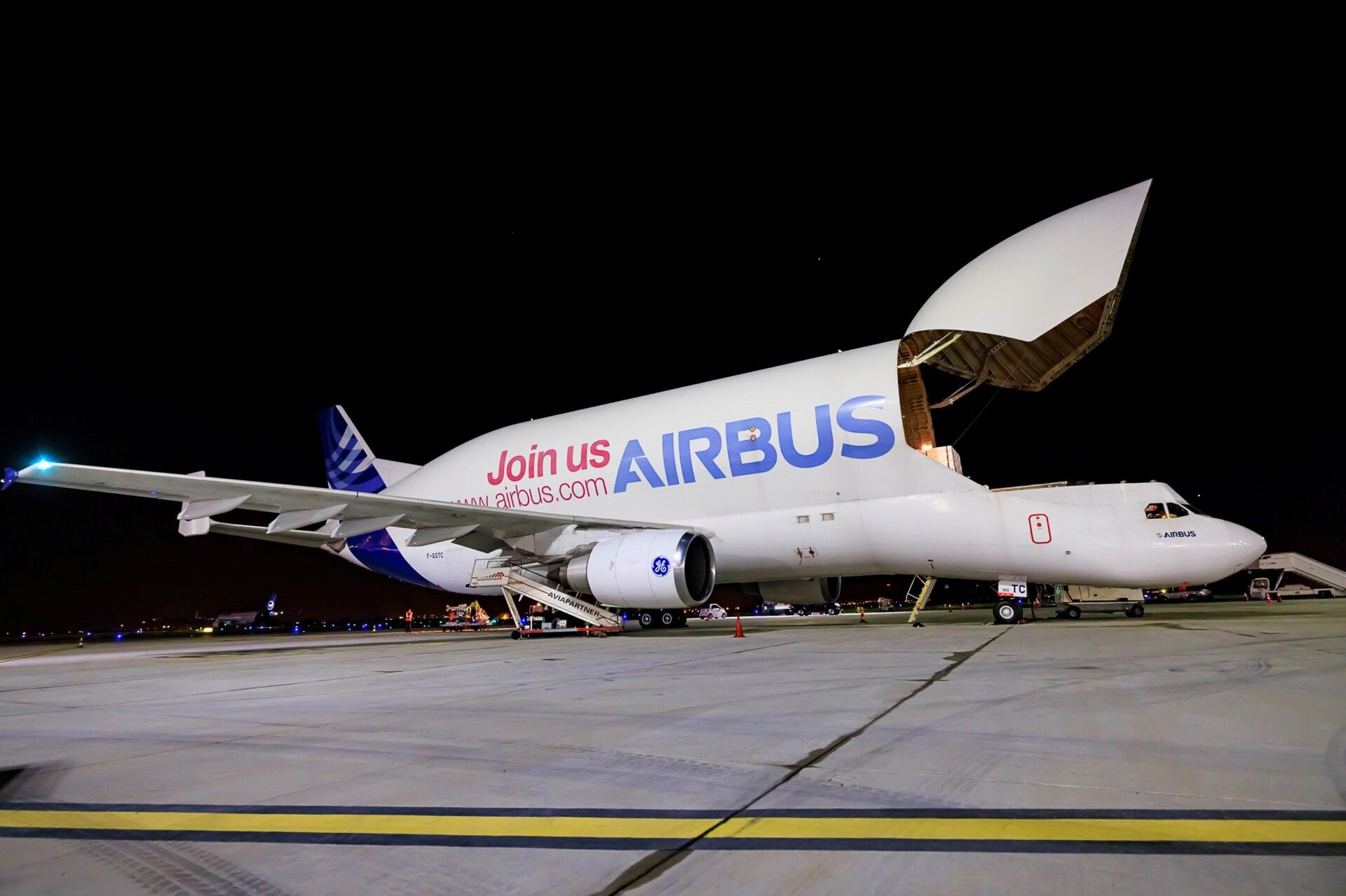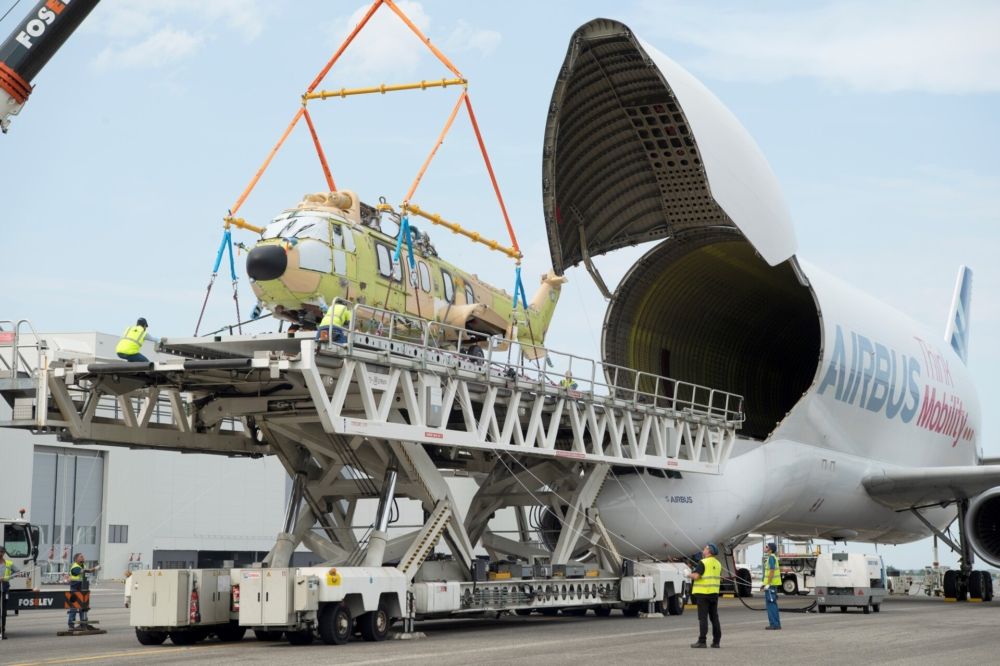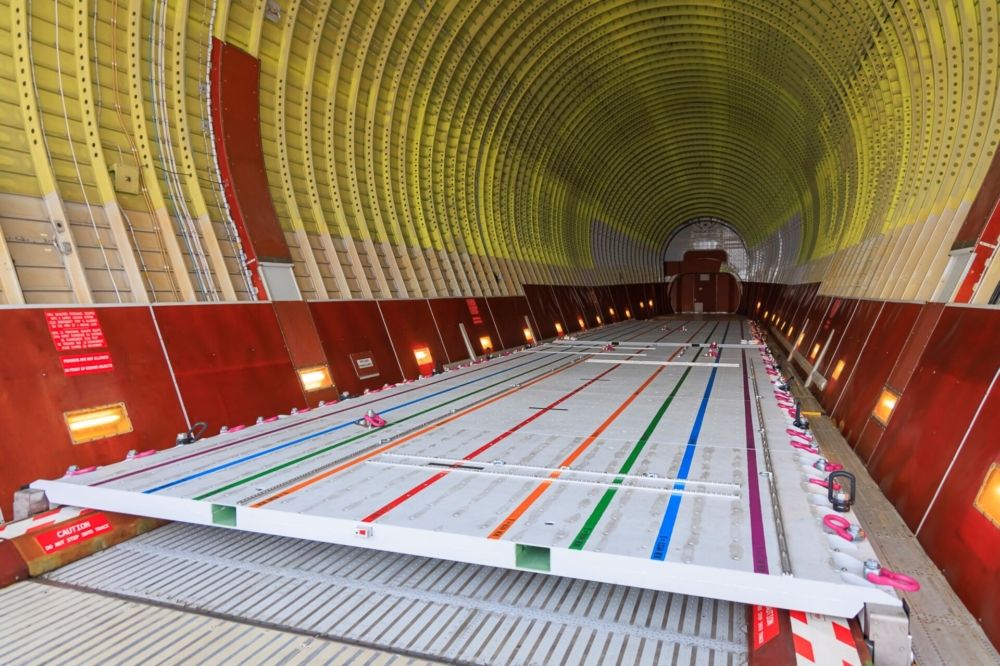Airbus' 'Beluga' outsize cargo aircraft are well known for their unorthodox shape and high capacity. The manufacturer used the A300 as a basis for its five BelugaST jets, before doing the same with six A330s to produce the BelugaXL. While these traditionally carry Airbus components, companies can now charter the jet for their own outsize cargo missions.
First mission complete
Earlier today, Airbus hosted a media briefing regarding the future of its fleet of five 'BelugaST' freighters. The visually striking cargo aircraft first flew in September 1994, and entered service a year later. However, despite its age, the aircraft isn't going anywhere. Indeed, speaking at the briefing, Philippe Sabo, Head of Airbus Transport International, explained:
"The aircraft were designed for 30,000 flight cycles. And today, on average, they have only flown 15,000 flight cycles. They are at their midlife, so we expect [another] 15 to 20 years of operations from them."
With Airbus having introduced the BelugaXL, it has been able to take a new approach to its use of the BelugaST. Specifically, it has begun making the plane available for use for charter outsize cargo missions. The first of these saw F-GSTC transport a helicopter from Marseille, France to Kobe, Japan via Warsaw, Novosibirsk, Seoul, and Osaka over Christmas.
Stay informed: Sign up for our daily and weekly aviation news digests.
Leading towards a separate subsidiary
At this moment in time, Airbus has made its number 2 (F-GSTB) and 3 (F-GSTC) BelugaSTs available for such missions. However, going forward, it has plans to dedicate all five to this area of its operations by the mid-2020s. This will eventually lead to the creation of a new Airbus subsidiary to handle this aspect of the Beluga's use. Sabo explains that:
"ATI [Airbus Transport International, the manufacturer's current outsize cargo division] will start the operation, and will be the first step of this new business model. Then, in 2023 we will have the creation of a new airline."
In instances where customers require a longer range or a higher capacity, Airbus may also be able to offer the services of the newer and larger BelugaXL on an ad-hoc basis. Reza Fazlollahi, a Business Development and Strategy Manager at Airbus, told the briefing that "we agreed with ATI to have access to one BelugaXL for extra-long flights from next year."
New innovations to assist operations
Airbus also took the opportunity to use the briefing to reveal a selection of innovations that it has implemented to support the BelugaST's new role. These included the multi-purpose pallet system, as seen above, which requires minimal reconfiguration regardless of the cargo it carries. It consists of two-meter modules, with tie-down points every 20 cm.
Airbus has also been making big steps when it comes to loading and unloading the Beluga. For these tasks, it has begun using a new outboard platform. It presently has just one, but will send more to strategic locations to expedite procedures. Finally, it will use a portable onboard cargo loader for payloads less than 12 meters long and 20 tons in weight.
What do you make of this new business venture by Airbus? Have you ever seen a BelugaST or a BelugaXL in action? Let us know your thoughts and experiences in the comments!



